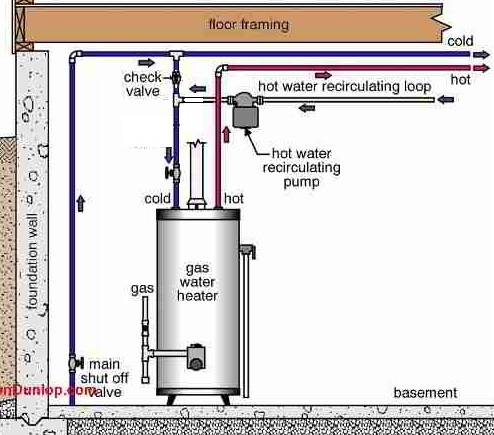Brookie the Rookie
New Member
Insulating the water pipes in our crawlspace is the first project I've been "allowed" to do without the fella (mostly) standing in the way. Because it's my first and only project I've been granted to do without him taking over, I want to do a stellar job. Because of that, I have four queries in need of opinions more educated than my own:
1. jadnashua had mentioned that by the looks of it, we may have a hot water recirculation line, but just like the trick of turning on the hot water and feeling the pipes to determine which is the hot water pipes, (as mentioned to me by bob_cville), is there a way to determine if we have a hot water recirculation line?
2. Which is the best option for PEX pipes: tubular polyethylene foam insulation ($2.63 for 6 feet at Home Depot)? Or tubular rubber insulation ($6.56 for 6 feet at Home Depot)? I had read that rubber insulation is better but when Fella saw the price difference he rebutted, "I'm sure it is better but is it three times the price better?" If it truly is, then I'll have the green light. If not, he's only going to purchase the foam insulation for our PEX pipes.
Any thoughts and advice on whether the superior insulation of tubular rubber insulation is worth the extra cost?
A) Also, if foam insulation is the consensus for economical purposes, should I still spring for the rubber pre-slit joints? I did see there are Youtube videos on how to make foam joint coverings using a mitre box, but if I should have the premade rubber joints, I will absolutely do so.
B) Finally, a HomeDepot DIY video says "rubber foam sticks are more durable and useful for lines connecting to refrigerators and air conditioners" so even if the general consensus is that I should just go with the tubular polyethylene foam, should I consider using the tubular rubber insulation for the air conditioning and refrigeration pipes? That might be a REALLY dumb question since I'm not sure if the refrigerator and air conditioner lines are even water pipelines, so thank goodness for this forum and thank you for making me much more educated today than I was yesterday.
1. jadnashua had mentioned that by the looks of it, we may have a hot water recirculation line, but just like the trick of turning on the hot water and feeling the pipes to determine which is the hot water pipes, (as mentioned to me by bob_cville), is there a way to determine if we have a hot water recirculation line?
2. Which is the best option for PEX pipes: tubular polyethylene foam insulation ($2.63 for 6 feet at Home Depot)? Or tubular rubber insulation ($6.56 for 6 feet at Home Depot)? I had read that rubber insulation is better but when Fella saw the price difference he rebutted, "I'm sure it is better but is it three times the price better?" If it truly is, then I'll have the green light. If not, he's only going to purchase the foam insulation for our PEX pipes.
Any thoughts and advice on whether the superior insulation of tubular rubber insulation is worth the extra cost?
A) Also, if foam insulation is the consensus for economical purposes, should I still spring for the rubber pre-slit joints? I did see there are Youtube videos on how to make foam joint coverings using a mitre box, but if I should have the premade rubber joints, I will absolutely do so.
B) Finally, a HomeDepot DIY video says "rubber foam sticks are more durable and useful for lines connecting to refrigerators and air conditioners" so even if the general consensus is that I should just go with the tubular polyethylene foam, should I consider using the tubular rubber insulation for the air conditioning and refrigeration pipes? That might be a REALLY dumb question since I'm not sure if the refrigerator and air conditioner lines are even water pipelines, so thank goodness for this forum and thank you for making me much more educated today than I was yesterday.

